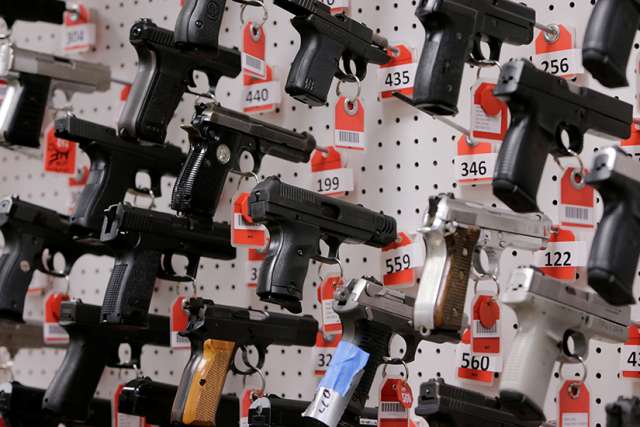When the senseless deaths of 17 six-year-olds and three seven-year-olds (and six educators trying to protect them) couldn’t bring sanity to the U.S. gun laws debate, it looked like absolutely nothing would.
That shooting occurred Dec. 14, 2012 and even during the Christmas season no laws were passed to increase the age for purchasing semi-automatic weapons to the same age as buying a beer. A person deemed a terrorist threat and placed on the “no fly” list can still go buy weapons of mass domestic destruction. Federal law still does not require background checks for “private transactions,” like sales at gun shows.
Lawmakers couldn’t agree on any positive changes. As they always do, politicians — especially those funded by the National Rifle Association (NRA) — simply call for prayer and say the Second Amendment must be upheld, even if some solutions have nothing at all to do with the right to bear arms.
But today, on the heels of the Valentine’s massacre of 17 Florida high school students, there are real, tangible signs of hope.
So, what makes the Parkland shooting different? After all, since Sandy Hook there have been more than 1,500 mass shootings in the U.S.
There now appears to be three main catalysts for change, with the age of the victims being the most important. The other two would be the power of the buck and the ego of the President.
Sensing a swing in public opinion, giant retailers like Walmart and Dick’s Sporting Goods have announced they will sell guns and ammunition only to those 21 years of age or older.
Wall Street is also applying pressure. BlackRock, the world’s largest money manager, announced it will offer clients the ability to opt out of investing in gun manufacturers. Others in the financial sector like Blackstone, State Street and Bank of America have announced they’re re-examining their relationships with gunmakers, too.
More than two dozen companies, including Delta, United Airlines, MetLife and Hertz, have stopped offering special discounts to NRA members.
Then there’s President Donald Trump. He has already said he will issue an executive order to ban bump stocks, devices that turn semi-automatic rifles into machine guns.
Trump after Sen. Toomey says gun control bill didn't include changing age restrictions: "You know why, because you're afraid of the NRA." pic.twitter.com/g09FgYllXQ
— Axios (@axios) February 28, 2018
He also held an hour-long session with members of Congress at the White House and invited TV cameras. And he embraced a series of gun-control measures that his Republican party has long rejected. Theatrics or not, his comments offer hope.
At one point, he chastised politicians for being “too afraid” of the NRA, which contributed several million dollars to his 2016 presidential campaign. Trump boasted that the NRA is on board with some gun control measures.
While the NRA might hold sway over some lawmakers, Trump said, it has less power over him.
Trump’s ego is enormous and a case can be made that if he can slay the mass shootings menace in the U.S., it could be his historical legacy, like civil rights for Lyndon Johnson and winning the Cold War for Ronald Reagan.
In the last 50 years, more Americans have died on home soil from domestic guns than all Americans have died in all the wars the country has fought. Regardless of his motivation, Trump appears to be moving to the right side of the debate.
And the final catalyst for change — the age of the victims, or more precisely the age of the survivors.
The ages of children at Sandy Hook was heart-wrenching and dumbfounding. But parents had to carry the fight and be the victims’ voices to prevent them dying in vain.
Surviving six- and seven-year-olds couldn’t do it. Think about it. The children who survived Sandy Hook are right now five years younger than those who survived in Florida.
Teenagers can organize marches, boycotts and social media campaigns. They can demand change, which they are doing now. They are telling politicians that their thoughts and prayers are not enough, that it’s time for action.
They’ve been attacked as “crisis actors” by the gun lobby, and I hope these young people continue to be underestimated by those folks.
During the early 1960s civil rights movement, children in Alabama defied parents, teachers and even police to march against segregation. They had fire hoses turned on them for goodness sake. And their crusade helped to change history.
And today’s teen crusade is picking up momentum. A national Quinnipiac University poll found that 97 per cent of Americans support universal background checks for firearms purchasers. Sixty-seven per cent of respondents favour banning assault weapons.
Some of these high school students will be voting this November in mid-term elections and all of them will be old enough to vote in 2020. So much can be done without impacting the Second Amendment and these teenagers are not going to give up without meaningful change.
That’s why common sense is returning to the gun debate and hope is the highest in years.
(Brehl is a writer and author of several books.)


